Table of Contents
This workflow will help you use Perplexity AI and NeuronWriter NLP to generate and optimize SEO-friendly content. The goal is to create content that ranks well, engages readers, and answers search intent effectively.
Perplexity AI
Perplexity AI is a research-focused tool that uses natural language processing (NLP) to create SEO content.
- Perplexity generates responses using verified sources, providing citations for fact-checking. While not infallible, this transparency allows users to verify information accuracy. Accurate and up-to-date information strengthens EEAT (Expertise, Authoritativeness, and Trustworthiness).
- Perplexity tracks current search trends, enabling it to create relevant, timely content that follows current interests. This is one of the major differences when comparing to ChatGPT.
- By analyzing related topics and subtopics, Perplexity produces comprehensive content that thoroughly covers subjects, which search engines typically favor.
- The AI’s understanding of semantic relationships between words allows it to incorporate keywords and phrases naturally, avoiding keyword stuffing while enhancing SEO.
- Perplexity seamlessly adds relevant keywords into content, boosting search engine rankings without compromising readability.
- Create a Free Perplexity AI Account
NeuronWriter
NeuronWriter uses NLP algorithms to analyze SERP data and provide SEO recommendations for your content. NeuronWriter is good for creating SEO content for several reasons:
- NeuronWriter uses AI and natural language processing to analyze and optimize content.
- It examines top-ranking pages in Google to give you insights on how to outperform your competitor’s structure, keywords, and readability.
- NeuronWriter’s outline builder streamlines the process of creating a well-structured, SEO-optimized article.
- The platform suggests relevant headers, keywords, and phrases and helps you add them naturally throughout your content, improving search engine rankings.
- NeuronWriter gives you a real-time SEO score to help you improve your content by adding missing headings, additional keywords, or improving sentence clarity.
- Sign Up for a NeuronWriter Free Trial
Workflow: How to Create SEO Content with Perplexity AI and NeuronWriter
Step 1: Keyword Research and Traffic Analysis
1. Identify a broad keyword
- Choose your broad keyword or topic (e.g., “portable power stations”).
2. Use Ahrefs Free Keyword Generator to Check Keyword Traffic
- Head to Ahrefs’ free keyword generator or another keyword tool to check search traffic data for your broad keyword.
- Look for search volume, keyword difficulty, and related long-tail keywords.
- Find a keyword with a healthy search volume and a manageable difficulty level that you can rank for.
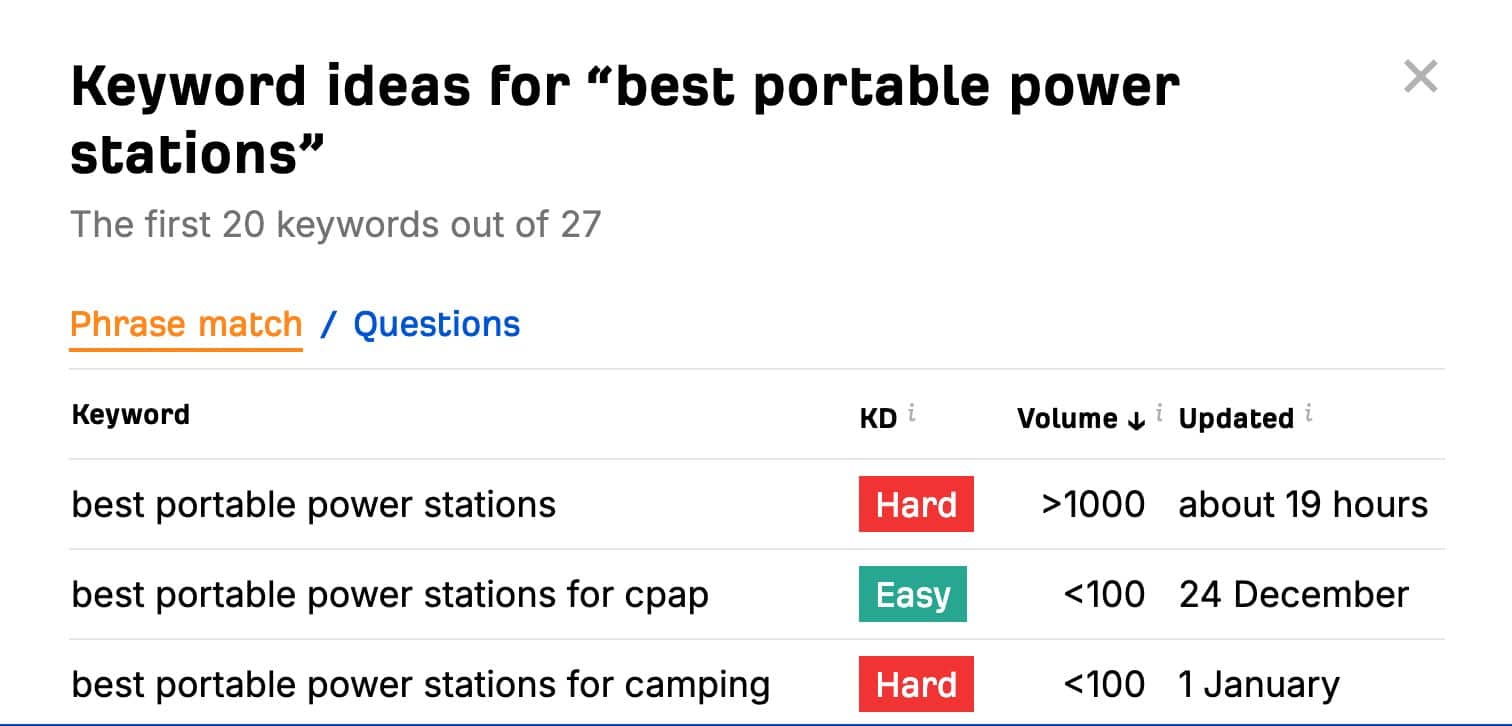 AHREFs Free Keyword Generator AHREFs Free Keyword Generator |
In this example, we select the target keyword “best portable power stations for cpap” with search volume of 100 visits per month, and keyword difficult of “easy”.
Step 2: Use NeuronWriter for Content Optimization and Idea Generation
1. Setup your project in NeuronWriter and link it to your website domain. You only need to do this once per domain.
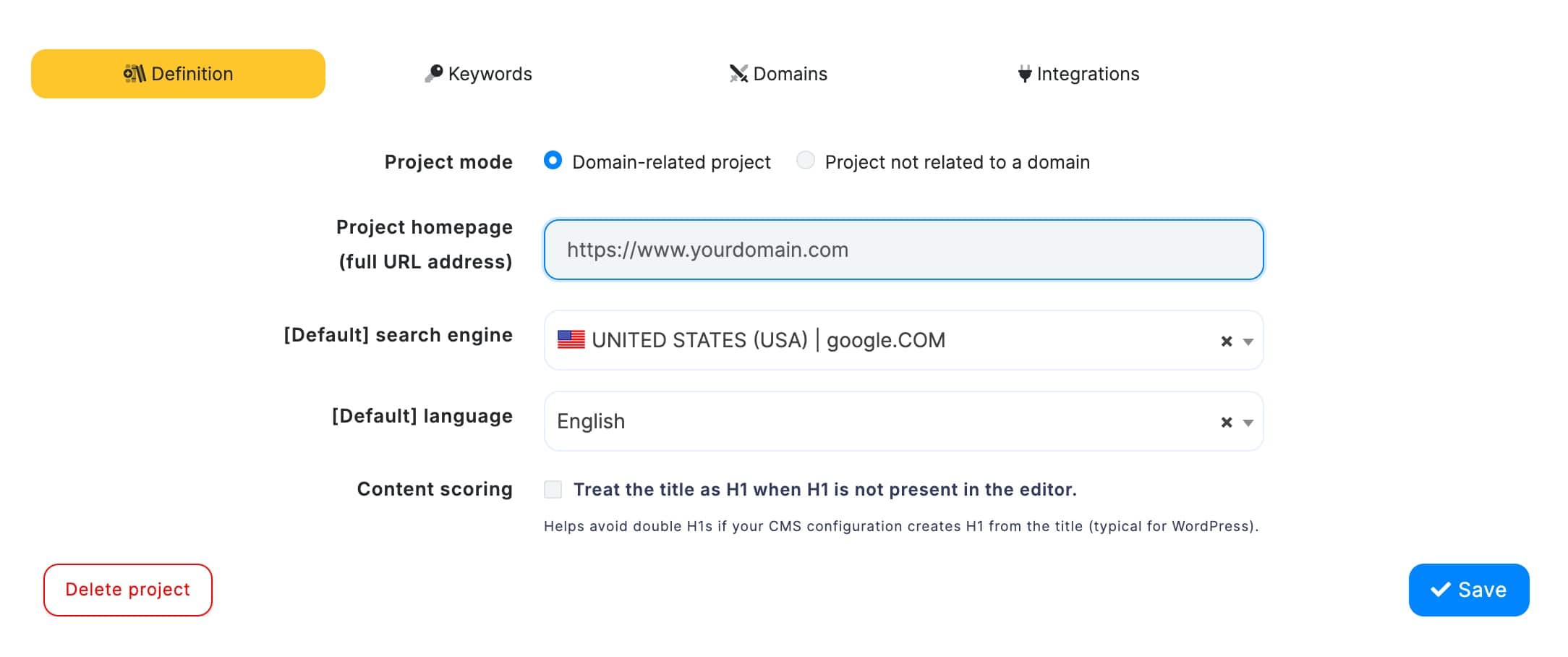
2. Run a Query on your Target Keyword in NeuronWriter
- After you setup your website project, navigate to your dashboard and click “New Query”
- Input your main keyword (e.g., “best portable power stations for cpap”).
 NeuronWriter Keyword Query NeuronWriter Keyword Query |
3. Review top-ranking competitors
- NeuronWriter will analyze the search landscape and show you the top-ranking articles for that keyword.
- Select articles with high SEO scores, indicated by a green circle. Deselect any with red SEO scores.
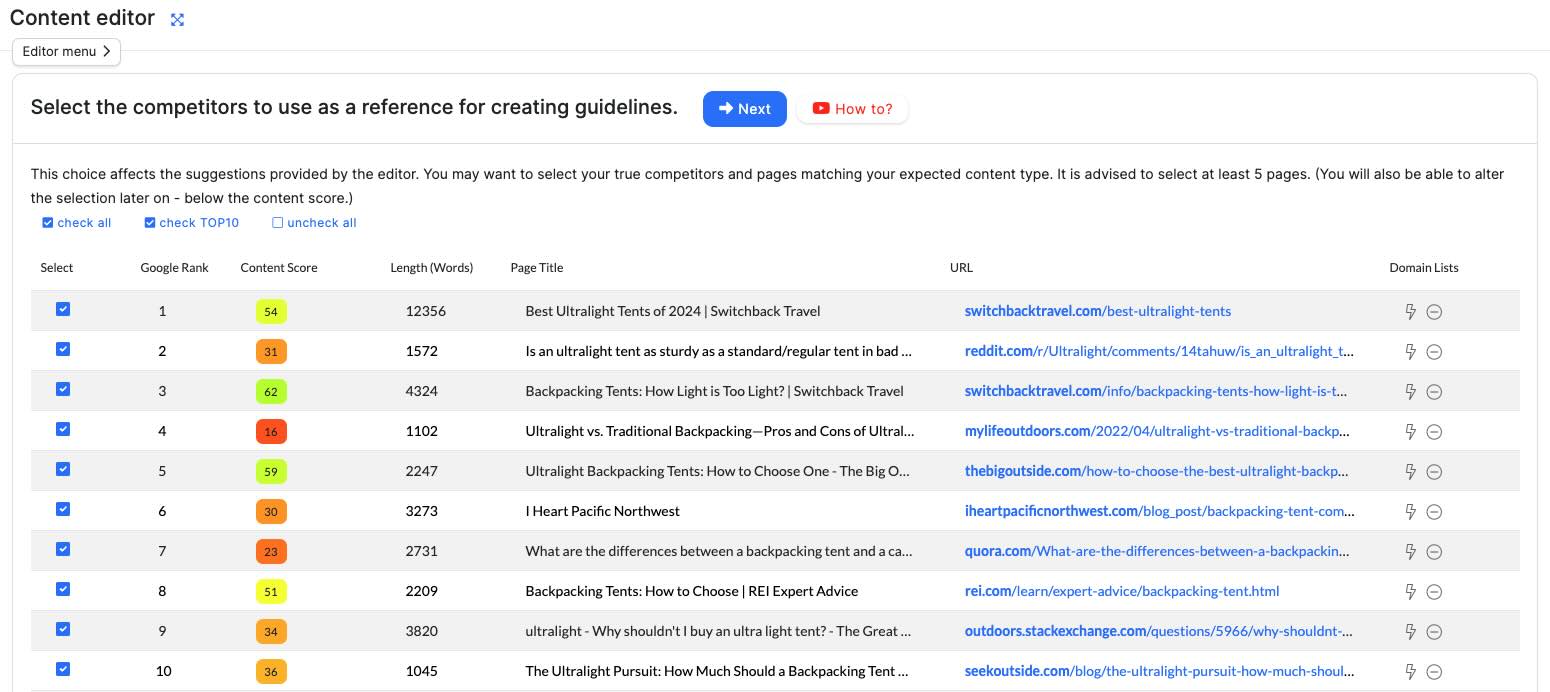
4. Use NeuronWriter’s AI outline builder to create your SEO structure.
- Next, go to your content editor to begin writing your SEO article.
- Locate the outline builder in the right side panel of the content editor – click “Outline” and “AI-Outline.
- Enter your target keyword and click “Generate”
- NeuronWriter’s AI will analyze top-ranking content for your keyword and generate an SEO outline with recommended NLP terms, H1 through H4 headers.
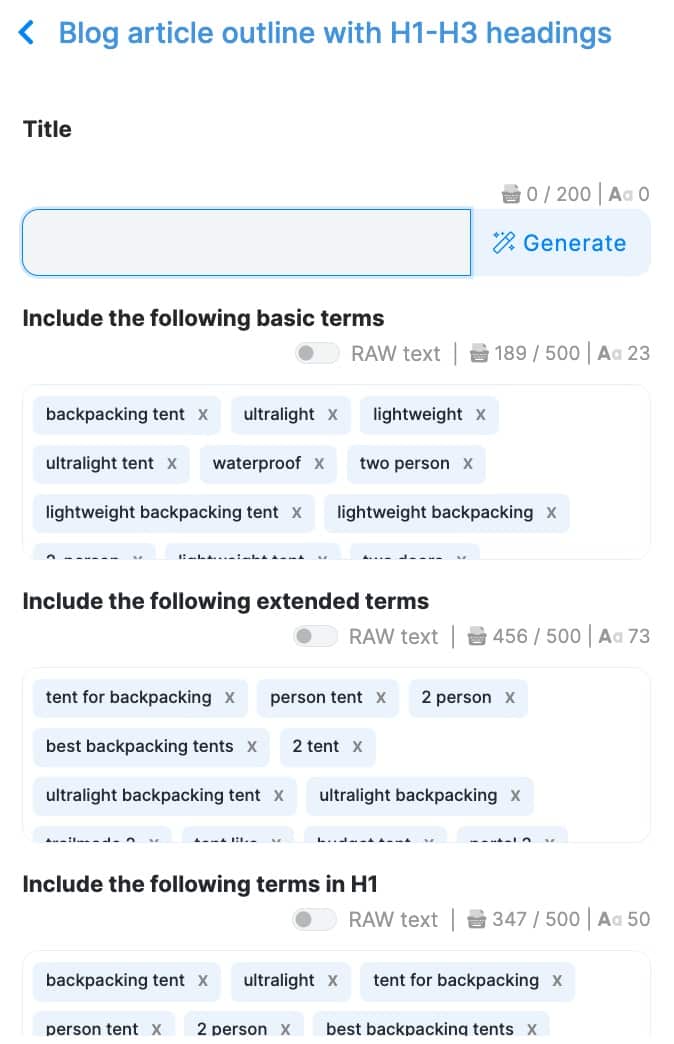 |
5: After building your SEO outline, add a few questions from the People Also Ask (PAA) feature to automatically pull relevant questions for your topic from Google search results.
- PAA is a valuable section within Google that features commonly asked questions related to your keyword.
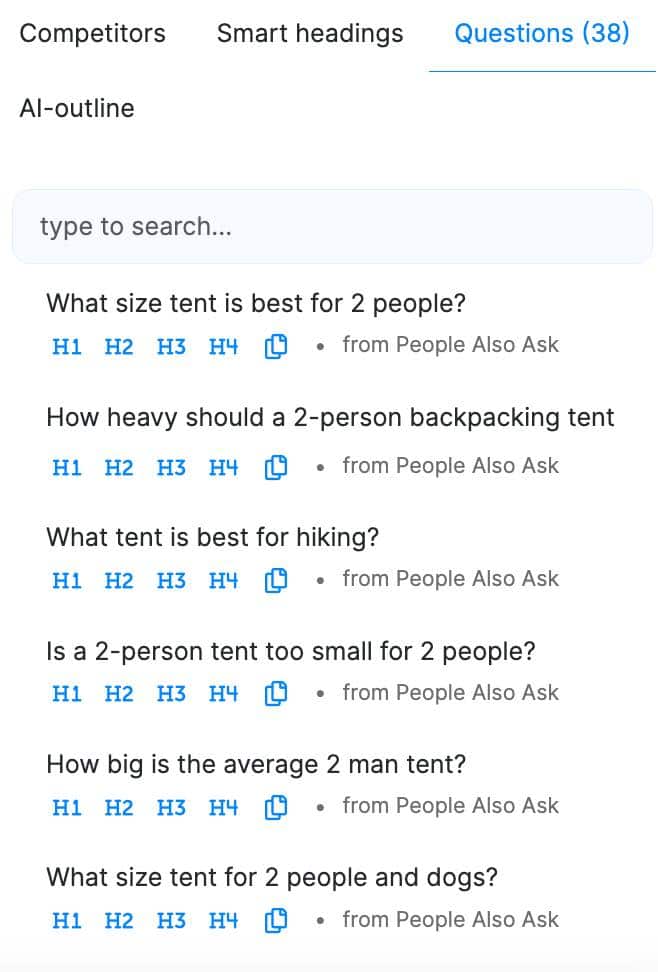 NeuronWriter People Also Ask |
Step 3: Content Creation with Perplexity AI
1. Create a Perplexity Space
- Create a dedicated space in Perplexity to keep your research materials and chat discussions neatly organized.
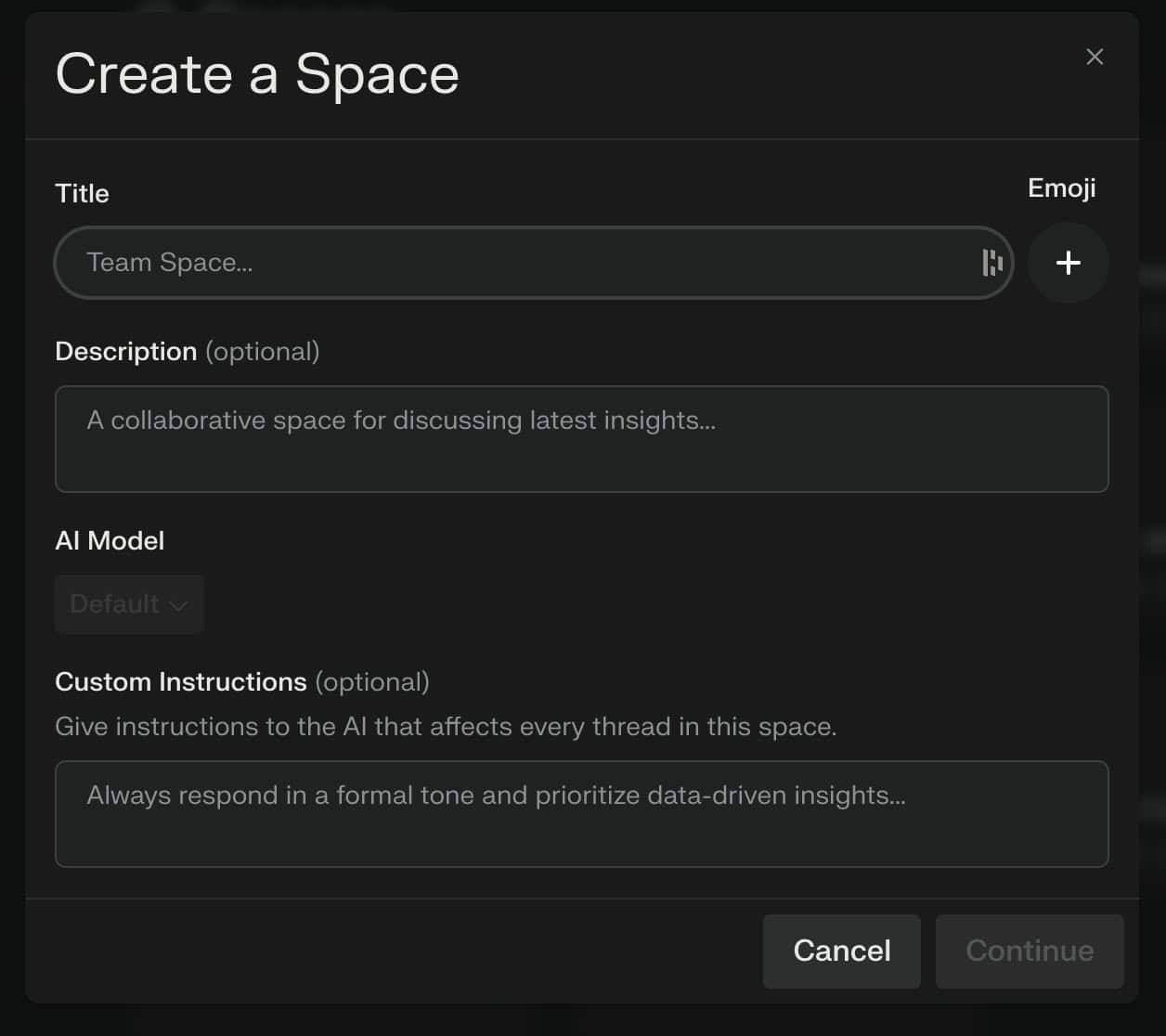 Perplexity Spaces Perplexity Spaces |
2. Tailor the Space to fit your specific project needs.
- Here is a sample SEO prompt to input into the “Instructions”:
When writing about the provided {topic}, I will: Craft engaging, informative paragraphs that are informal yet professional. Avoid slang, fluff, clichés, and overly casual language. Use varied sentence structures, including some fragments, to mimic natural speech patterns. Write at an 8th-grade reading level, balancing simplicity with educational value. Incorporate relevant [NLP] terms seamlessly into H2 and H3 headings. Format the text for easy readability using: Bullet points, Numbered lists, Bold text for emphasis. Aim for a tone that is approachable, knowledgeable, and slightly conversational. Vary paragraph lengths, with some shorter ones for impact and longer ones for detail. Use active voice predominantly to maintain reader engagement. Include specific examples or data points to support main ideas. Optimize for SEO by naturally including relevant keywords throughout the text. Conclude with a brief, actionable takeaway or summary. I never use the following words: Explore, Captivate, Tapestry, Leverage, Embrace, Resonate, Testament, Delve, Elevate, Intriguing, Realm, Dive, Uncover, Discover, Unleash, Nuances, Embark, Captivate, Nestled, Boasts, Emerge, Embrace, Embody, Ensure, Blend, Immerse, Indulge, Cutting-edge, Conveying, Synergy, Grapple, Navigate, Crucial, Paramount, Foster, Innovative, Emerging, Versatile. Instead, I will strive for fresh, precise language that clearly communicates ideas without relying on buzzwords or jargon.3. Generate the Article in Perplexity
- Break the article down into manageable sections (based on your outline).
- Don’t try to generate the article all at once – go section by section.
- Craft content that is clear, informative, and optimized for featured snippets (concise, to-the-point answers).
Step 4: Final Refinements and Human Touch
1. SEO Review
- Copy the content from Perplexity into NeuronWriter.
- Check the keyword distribution, meta description, and readability.
- Keep tweaking the content to get your SEO as high as possible.
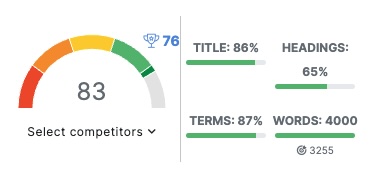
2. Quality Check
- After optimizing with NeuronWriter, read through the content yourself to ensure it aligns with your style, voice, and tone.
- Add personal anecdotes or insights if needed.
- Ensure the content flows naturally and feels authentic, even though it was AI-assisted.
3. Internal Linking and Call to Action
- Internal Links: Add relevant internal links to other blog posts or resources on your site. This improves SEO and keeps users engaged.
- Call to Action: End the post with a clear, compelling call to action (e.g., “Explore our recommended power stations!”).
Step 5: Publish and Monitor Performance
1. Publish Content
- Once your content is finalized, publish it to your website or blog.
- Ensure that the content is structured well for both desktop and mobile users.
2. Monitor Rankings and Traffic
- Expand the Editor Menu, click “Set/Suggest Target URL” – this will allow you to track your article progress in NeuronWriter.

- Click the “Competitor” tab to monitor how your article performs in comparison to the top 30 ranking articles for your keyword.
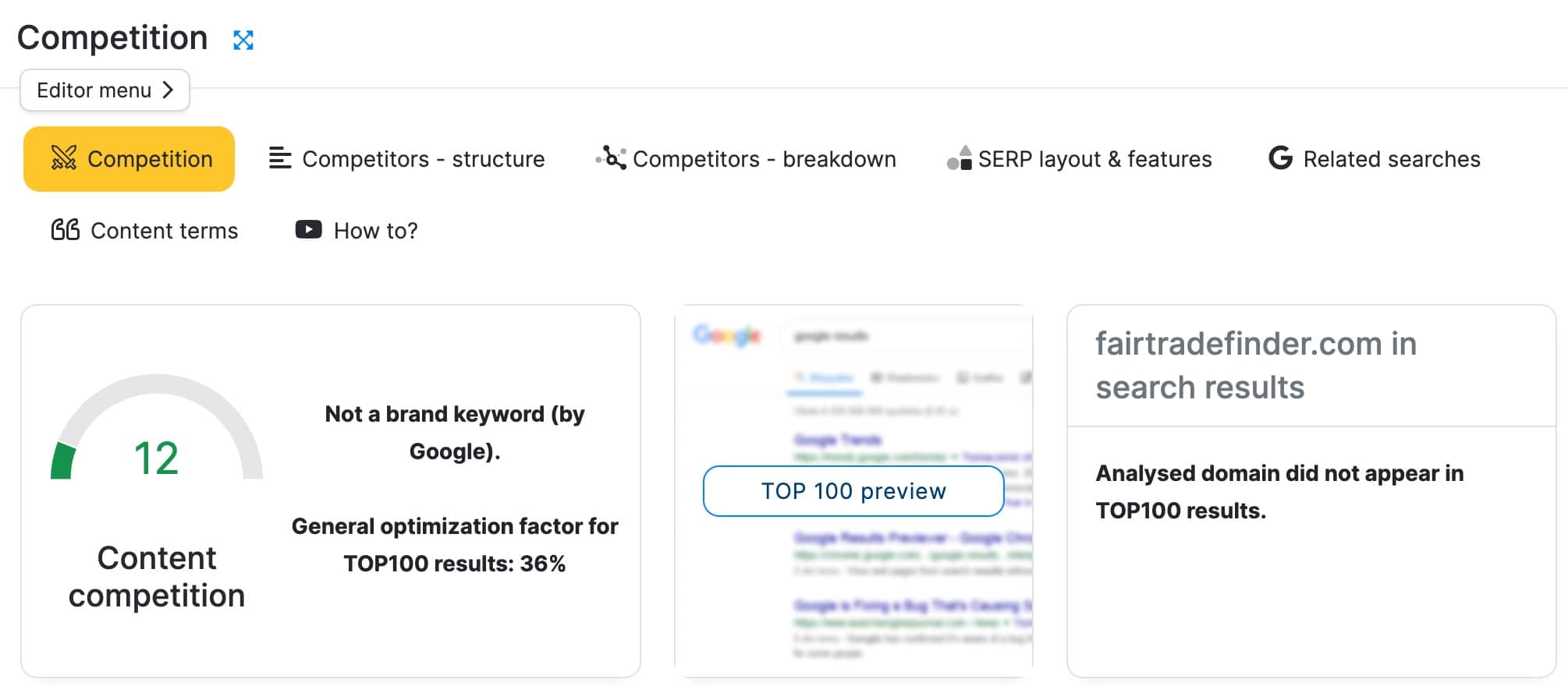 NeuronRriter Competitor Tab NeuronRriter Competitor Tab |
3. Use tools like Google Analytics and Search Console to track the performance of the article.
- Track rankings for your target keyword(s).
- Monitor user engagement metrics (bounce rate, time on page) to identify areas for improvement.
4. Iterate and Improve
- Based on performance metrics, revisit the content periodically and make updates.
- Update keywords and add more content as needed.
- Respond to user feedback or comment sections to improve engagement.
Related Topics: